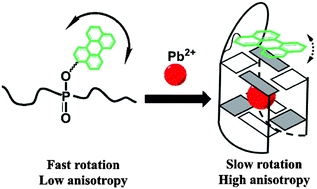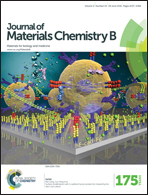Phosphate-perylene modified G-quadruplex probes for the detection of Pb2+ using fluorescence anisotropy†
Abstract
A simple and universal phosphate-perylene modification strategy was applied in the development of G-quadruplex probes with thrombin binding aptamer (TBA) and [d(TGGGT)4] (G4) sequences. A perylene moiety was inserted at different phosphate positions of oligonucleotides without a significant effect on the G-quadruplex structures. Upon binding with K+ or Pb2+, these probes showed different perylene fluorescence anisotropy responses due to the different labeling positions and G-quadruplex structures. Two probes (G4-9 and TBA-9) were successfully used in Pb2+ detection through fluorescence anisotropy. Once the complexes of Pb2+ with G4-9 or TBA-9 were formed, the rotational diffusion of the perylene moiety was limited, resulting in a significant increase in fluorescence anisotropy. Both probes showed good sensitivity to Pb2+ and their fluorescence anisotropy signals demonstrated good linear responses to the logarithm of Pb2+ concentrations and the detection limits were 24.5 nM and 30.0 nM for TBA-9 and G4-9, respectively.


 Please wait while we load your content...
Please wait while we load your content...